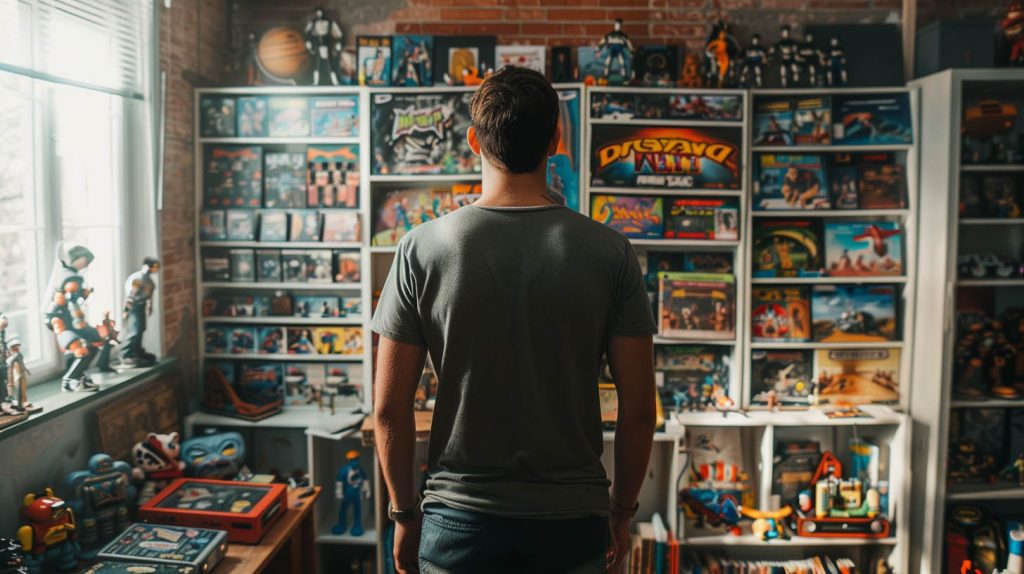When you buy through our links, we may earn a commission. Learn more.
Understanding Vintage Toy Values
When exploring vintage toy values, we need to consider essential pricing guidelines, factors that influence worth, and the critical role of condition. Each element plays a vital part in determining how much collectors and enthusiasts value specific items.
Price Guide Essentials
A price guide serves as a valuable tool for collectors. It provides estimated values for various vintage toys based on current market trends. When using a price guide, we should keep the following in mind:
- Popularity: Some toys are more in-demand than others. Limited editions or classic brands often fetch higher prices.
- Rarity: The fewer items available, the more valuable they may be. Exclusive toys from small runs tend to be more sought after.
- Market Fluctuations: Prices can change depending on trends and the economy. Regularly checking updated guides can help us stay informed about current values.
By familiarizing ourselves with these factors, we can make informed decisions when buying or selling.
Evaluation Criteria
Assessing a toy’s value requires criteria that influence its worth. Critical factors we consider include:
- Brand: Established brands typically have a devoted following, driving up prices.
- Year of Release: Older toys often carry higher value, especially if they are well-preserved.
- Completeness: Original packaging, accessories, and documentation add significant value. A complete set can often demand a much higher price compared to loose items.
We can ensure we are valuing our collectibles accurately by weighing these elements carefully before making market decisions.
Importance of Condition
The condition of a vintage toy is perhaps the most crucial factor in determining its estimated value. Here’s why:
- Mint Condition: Toys that are new, unused, and in their original packaging are often the most valuable.
- Excellent Condition: Slight signs of wear may lower the value, but well-maintained toys remain desirable.
- Poor Condition: Toys with significant damage or missing parts can drastically decrease in worth.
While considering our collectibles, we should always assess the condition carefully. It helps us understand both potential market values and how to care for our collections to maintain their worth.
Navigating Collectible Toy Series and Brands
Understanding the landscape of collectible toys helps us make informed decisions as collectors. By focusing on iconic manufacturers, notable vintage series, and the various accessories and variations, we can better appreciate and organize our collections.
Iconic Toy Manufacturers
Several manufacturers have shaped the vintage toy industry. Here are a few key players that have left a mark:
- Mattel: Known for Barbie and Hot Wheels, Mattel toys have a huge following.
- Kenner: Famous for action figures, especially the Star Wars series, which continues to be highly sought after.
- LJN: Recognized for their wrestling figures and other action toys from the 1980s.
- Playmates: Renowned for Teenage Mutant Ninja Turtles and similar franchises.
These brands often determine the value of our collectibles. Familiarizing ourselves with their products and history can help us track and evaluate the worth of our items.
Notable Vintage Series
Within each brand, there are iconic series that every collector should know. Some of the most notable include:
- Star Wars Toys: Originally released in the late 1970s, these figures and vehicles are immensely collectible. Certain items can fetch high prices at auctions.
- Transformers: Introduced in the 1980s, these toys are popular due to their unique designs and the nostalgia they evoke.
- Hot Wheels: With thousands of variations, certain models can be very valuable. Limited editions and rare color schemes often attract collectors.
Knowledge of these series aids in identifying which toys to focus on in our collections and can also highlight what items may be worth selling.
Categorizing Accessories and Variations
As we navigate our collections, accessories and variations play a crucial role. Here’s how we can categorize them:
- Accessories: Items like vehicles, playsets, and cases enhance the main figures. Collectors often seek these items to complete their sets.
- Variations: Many toys come in multiple colors, sizes, or styles. For example, variants of popular figures can significantly increase value depending on their rarity.
Maintaining a database with photos and descriptions of our collectibles helps to track these variations effectively. This organization can contribute significantly to our collection’s value and potential resale opportunities.
I’m Cartez Augustus, a content creator based in Houston, Texas. I’ve been exploring a variety of niches in content marketing in order to increase website traffic. I enjoy experimenting with artificial intelligence, search engine optimization, and paid search. The process of creating nerd-related content has been extremely rewarding since it has enabled me to network with people who are knowledgeable about these subjects.

